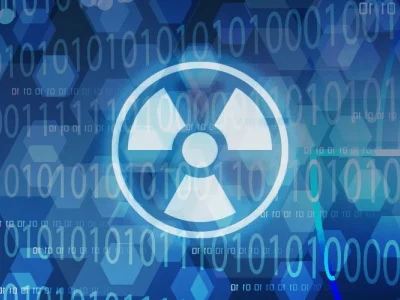The Competence Center for Preclinical Imaging and Biomedical Engineering at the Faculty of Health focusses on the application, establishment and validation of preclinical molecular and semi-functional imaging methods in both radiotherapy and applied research in the fields of biomedicine, radiation biology and medical radiation physics.
Research
Research focusses on the further development of imaging methods in order to better understand relevant properties in the systems biology of different tumour entities. Special emphasis is placed on the visualisation and quantification of highly specific properties of tumour biology, using radiolabelled lead structures and the integration of multimodal preclinical morphological and molecular imaging systems (micro-CT, micro-SPECT, micro-PET, and micro-MRI).
Scientific rationale
Despite the great variety of different imaging modalities and methods, their current use in radiotherapy is predominantly limited to morphological cross-sectional imaging techniques such as computed tomography (CT). This procedure only provides limited information, such as the size or position of a tumour. Molecular imaging methods, on the other hand, can visualise and quantify specific biological processes, such as the individual vascular system reformation (neo-angiogenesis) of tumours or areas of tumour which are undersupplied with oxygen (tumour hypoxia). This information subsequently provides the basis for optimal planning of therapy and progress monitoring in the context of personalised precision radiotherapy.
Together with our university research partners, we work on a wide variety of projects in the fields of biomedicine, radiation biology, medical information technology , and medical radiation physics.
Infrastructure
The entire medical and technical infrastructure as well as the necessary office space and laboratories of the Competence Center for Preclinical Imaging and Biomedical Engineering are located in the MedAustron Ion Therapy and Research Facility building.
Micro-ultra-high field 15.2 Tesla magnetic resonance imaging (micro-MRI)

The micro-MRI (BRUKER BioSpin MRI GmbH, Ettlingen, Germany) is characterised by its high spatial (up to 35µm ex vivo) and spectral resolution. With a bore diameter of 11cm, in combination with the corresponding 1H and 19F coils as well as special positioning beds, anatomical, functional, and molecular information can be acquired from laboratory animals. Standard protocols and sequences include T1w, T2w, DWI, DCE-MRI, CEST-MRI, and spectroscopic imaging.
Micro-computed tomography (micro-CT)

The micro-CT (X-Cube, Mole cubes, Ghent, Belgium) is based on the cone-beam principle, whose X-ray tube can be operated with a voltage of up to 80 kV. Due to the additional movement of the table, a spiral acquisition is possible, which significantly shortens measurement time compared to conventional micro-CT systems. The system achieves a resolution of 50µm, 100µm or 200 µm (pixel size), depending on the size of the area to be scanned and the reconstruction algorithms used. Three object holders of different sizes are available, with the possibility of being able to monitor physiological vital signs in the laboratory animals and anaesthesia connection for in vivo imaging.
Micro-positron emission tomography (micro-PET)

Micro-PET imaging forms the basis for molecular visualisation and quantification of highly specific biological processes in laboratory animals using radioactively labelled guide structures (PET radiotracers). The self-contained micro-PET system houses all electronics, a power distribution system, an internal cooling system, motion control electronics, the detector ring and two integrated servers for image acquisition and data reconstruction. The micro-PET detector ring contains nine detector blocks of five detectors each, arranged in rows in the direction of the bed feed. Each of these 45 detectors consists of a 25.4x25.4x8 mm³ monolithic LYSO crystal, optically coupled to a photon sensor (SiPM). Three object holders of different sizes are available, with the possibility of being able to monitor physiological vital signs in the laboratory animals and anaesthesia connection for in vivo imaging.
Micro single photon emission tomography (micro-SPECT)

Micro-SPECT imaging forms the basis for molecular visualisation and quantification of highly specific biological processes in laboratory animals using radioactively labelled guide structures (SPECT radiotracers). The micro-SPECT system houses all the electronics, an energy distribution system, the scintillators and two integrated servers for image acquisition and data reconstruction. In addition, two universally applicable multi-pinhole collimators of different sizes can be used for corresponding investigations on small laboratory animals. The micro-SPECT system includes seven detectors, each consisting of a 50.5x47x5 mm3 NaI (Tl) scintillator coupled to a silicon photomultiplier array. The crystal is a continuous/monolithic crystal of 5 mm thickness. Three object holders of different sizes are available, with the possibility of being able to monitor physiological vital signs in the laboratory animals and anaesthesia connection for in vivo imaging.
Biomedical image data analysis, reconstruction and complex intelligent systems:

Various image processing and manipulation programmes are available for the quantitative analysis and visualisation of the image data acquired. High-performance computers are used to further develop artificial intelligence and pattern recognition in the field of preclinical imaging and biomedical analysis.
Laboratories
- Micro-CT Lab
- Multimodal Imaging Lab
- Image Post-Processing Lab
- Small Animal Housing Unit
Funded projects
Applied molecular imaging in personalised precision radiotherapy
- Funding Institution: Society for Research Promotion of Lower Austria (Gesellschaft für Forschungsförderung NÖ)
- Funding amount: €1,200,000
- Period of funding: 2021 - 2026
PAIR – Pre-clinical Ion Beam Research
- Funding Institution: FWF Austrian Science Fund
- Funding amount: €1,005,148.04
- Period of funding: 2022 - 2026
PRECISE – Development of 3D-printed surgical guides to standardize, refine and reduce animal experiments in osseointegration research
- Funding Institution: FWF Austrian Science Fund
- Funding amount: €152,437
- Period of funding: 2022- 2023
Current projects
Here you can find an excerpt of our current research projects:
Teaching
Scientific findings from these research projects are incorporated primarily into the Bachelor's and Master's degree programmes of the Faculties of Health and Engineering in the sense of research-guided teaching. Practical training takes place in the research laboratories and enables high-quality Bachelor's and Master's theses, which are backed up by profound research findings with high reliability and validity.
Team

Contact


















